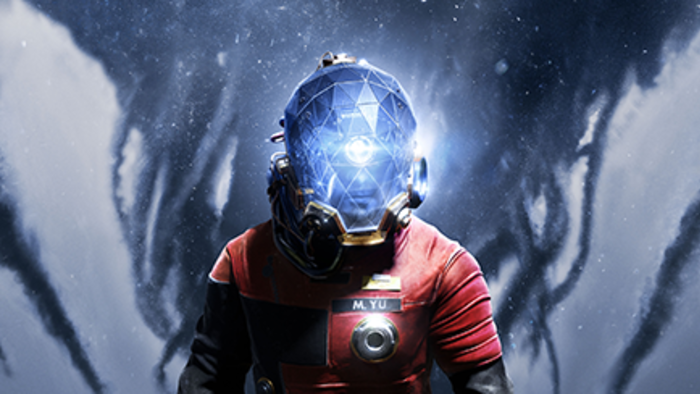After an eleven year wait, filled with starts, stops, sold rights and a full reboot, we now have a new Prey game to talk about. Yes, that’s right: the follow-up to the 2006 Human Head/Venom Games production is finally playable and available for purchase. It took a while, no doubt about it, but the drama has finally come to an end and we’re able to experience the fruits of the whole situation.
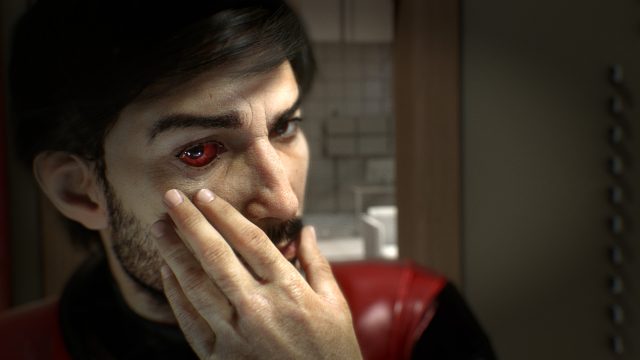
You may recall that Prey was an early Xbox 360 (and PC) game, which mixed Native Americans and aliens together into one fast-paced shooter. Full of expended bullets, quirky physics and inspiration from classic first-person shooters, it offered a solid campaign and some forgettable multiplayer. Sales were pretty impressive, too, what with the PC and Xbox 360 versions combining to total more than one million sold. As such, a sequel was announced and put into production, with Human Head collaborating on the project. It was a game that never came to light, though, and was scrapped before Bethesda Softworks snapped up the series’ rights and tasked Dishonored developer Arkane Studios with doing a full on reboot.
The result of all of the above is a fresh and almost wholly different Prey 2017, which only shares a few similarities with its predecessor, those being guns, aliens and space. Well, those things and a name, but that’s a given.
This time around, we’re put in control of one Dr. Morgan Yu, whose expertise in experimental research and biology has landed him (or her) a swanky position aboard an incredible space station known as Talus 1. It’s on the morning of his first official day of work that we assume his first-person vantage point, without knowledge of all of the crazy shit that’s about to happen. As is the case with all such narratives, the shit hits the fan, and things turn out to be different from what they seem. How different? Well, you’ll have to play the game to find out, because this is pretty much all I can actually say without spoiling the plot for you.
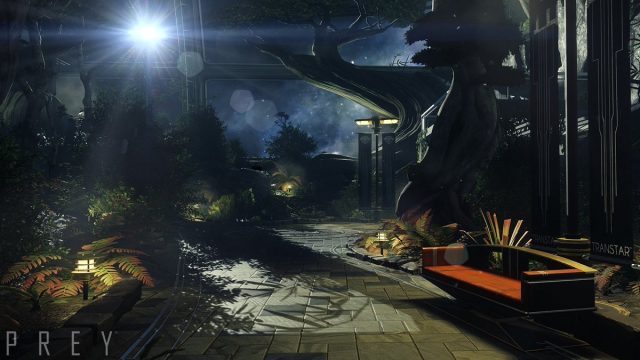
Prey begins innocently, then turns into a mindfuck that toys with its protagonist’s mind for the rest of its fifteen to twenty hour run time. As Morgan makes his way through the incredibly lavish Talus 1 — a moon orbiting research centre that is run by a secretive board whose members include his very parents — he learns a lot about just what’s been going on, as well as secrets about his past that his mind has artificially forgotten. How is that possible? Well, the whole thing is based upon the idea of neuromods, which are implantable devices that allow their human hosts to learn incredible skills overnight. Things like how to play the guitar like a pro, for example. However, when removed, these artificial implants revert their master’s mind to a time before he or she learned said skill, deleting memories in the process.
It’s this interesting set-up that exists at the base of Prey‘s involved and solid storyline, and as its campaign progresses, more and more of what actually happened comes to light. It’s heavy stuff, to say the least, and all culminates in an interesting twist of an ending that is unlikely to leave your mind for a while. Be warned, though, that this is more complex and heady than the plot of a traditional shooter, and that the choices you make (through side quests and the way that you build your character) will have an effect on how things play out, thanks to the game’s multiple ending structure.
Those who take the time to read the hundreds of books, emails, historical plaques and scribbled notes spread across the gigantic Talus 1 will learn of the alternate reality in which this game takes place. In it, the United States and Russia partnered together following a failed assassination attempt on President Kennedy, thus resulting in the development of a space project that was eventually taken over by the shadowy TranStar Corporation. Morgan’s bigger brother, Alex, was then installed as the project’s lead scientist, while their parents remained the only known members of the company’s board.
What you will also discover, both by reading and just by playing the game, is that something bad and unnatural happened after the program was put into motion. Humanity crossed paths with something strange — a new type of life form, in fact, which has been given the name Typhon. Something that we were never destined to meet or study, as though it’s led to leaps in our understanding of the universe, it’s also caused irreparable damage to the crew of the Talus 1, in a way that is reminiscent of both Aliens and The Thing.
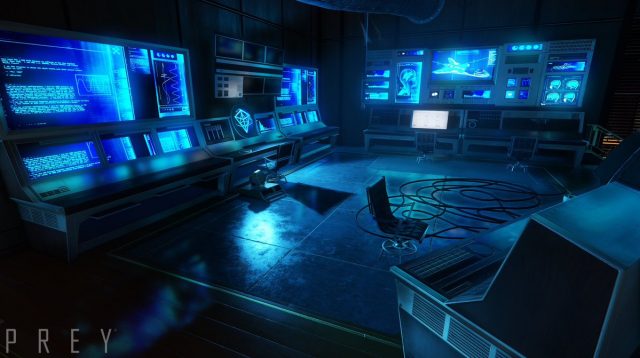
All of this culminates in a lengthy and involved video game, which takes inspiration from some of the science fiction greats that came before it, while presenting something that is said to be the spiritual successor to System Shock 2. Granted, while that is surely the case, I never had the opportunity to play the System Shock games due to not owning a gaming capable PC. As such, I can’t exactly compare them with Prey and say how this new experience was inspired by those games of yesteryear.
The best way for me to describe Prey, then, is to call it a mixture of things. It’s part BioShock (which was, itself, inspired by System Shock), part Alien Isolation, part Dishonored and part Deus Ex: Human Revolution.
A traditional, balls to the wall first-person shooter, this is not. Instead, what you’ll find is that Prey 2017 is a thinking man’s mixture of an FPS, an RPG and a stealth game, although the sneaking part of things ends up being more of a choice than a forced approach. It’s a good one, though, because the in-game enemies will kick your ass if given the chance and supplies are usually limited.
Those who buy this game thinking that it will be anything like DOOM, or even the original, Human Head version of Prey, may end up being very disappointed. Although guns (silenced pistols, shotguns, electrical bolt shooters and more) are a vital part of Morgan’s arsenal, ammunition is often scarce and the competition is regularly overpowered in comparison to oneself. This means that sneaking by enemies using vents or shadows is often your best approach. That said, it is not the only way of getting by since guns are always an option, as are different types of grenades that can be used to entrance Typhon life forms, strip them of their powers for a few moments or recycle the environment into pieces of matter that can then be used to craft weapons, ammunition, med kits and more. These grenades can lure an enemy near an explosive tank, which you can then explode.
The Typhon take multiple forms, which become more and more complex as you make your way through the game. What they start off as is the most interesting form, though, with that being the mimic. These small creatures resemble a mixture of a spider and a crab, and are able to take the form of environmental objects like chairs, plants, books and coffee cups. In doing so, they camouflage themselves while they wait for an unsuspecting human to walk by or interact with them. It’s at that point where they reveal their true colours and their surprising power, which can leave you with little health to spare if you’re not careful.
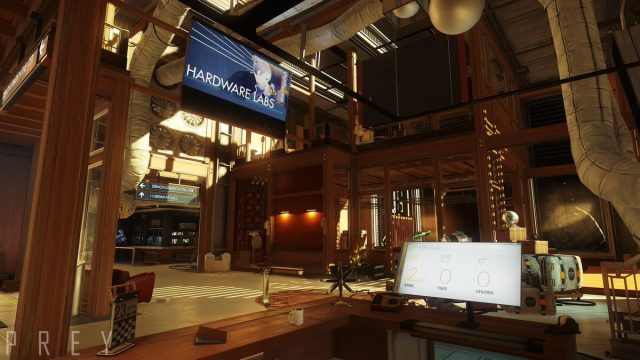
Mimics can be taken out with Morgan’s trusty wrench (which is one of the most reliable in-game weapons), but they can also be dispatched of with other types of guns or elemental traps. Discovered defense turrets — which are often found broken and abandoned throughout Talus 1 — can also be repaired, carried and hacked in order to serve your will. Be warned, though: These computerized weapons will shoot at any type of alien life form. Why is that important? Well, Morgan eventually earns the ability to research every Typhon type — from the tiny but effective mimc, to the larger phantoms who can evolve to shoot fire, all the way to the giant floating creatures who can control minds and deal a great amount of damage. Then, using this research, he’s able to learn to use their powers against them.
Being able to modify oneself with alien powers is an exciting option that gives you abilities that you would otherwise not have. It comes at a cost, though, because not only will turrets shoot at you, but you’ll have to forego acquiring human skills as well. After all, neuromods do not grow on trees, and it’s them that you’ll need in order to learn different powers, increase Morgan’s health, teach him how to hack and repair, or even gain the ability to lift heavy items out of the way.
In fact, there are so many different upgrades and options at your disposal that every person’s build will be different. Some may choose to go all human (which is great if you’re an achievement or trophy fan), and focus on being able to repair turrets, pry open broken doors and upgrade weapons, while others may go for more of an alien approach. I found myself with a few alien powers and a lot of human abilities, because I discovered that being able to hack, repair and lift things suited my play style best. It allowed me to enter lots of different areas that would have otherwise been blocked off, and helped me find lots of resources in the process.
If I would have had more neuromods to play with, I definitely would have gone more alien than I did, but that just wasn’t in the cards. I took my time with the game and explored a ton, trying not to let any available room in the incredibly expansive but very detailed space station go overlooked. Even then, with all of the neuromods that came with such sleuthing, I still didn’t have enough to get a lot of the alien powers. I also found that most of them remained locked, even though I’d done a decent amount of research by scanning nearby foes. So, if you do plan to focus on the extraterrestrial side of things, make sure to scan absolutely everything you come across and save some skill points for later.
At least I was able to get a couple of those powers, including the ability to mimic different objects. I didn’t find it to be all that helpful, though, because enemies seemed to be able to spot me very easily. The physics were also somewhat wonky.
It’s very easy to get lost in this game, as well. Prey‘s space station is massive, and it features an overwhelming amount of sections, rooms, vents and exterior breaches to explore; so much so that only the most dedicated will see everything that it has to offer. I took my time, as mentioned, and got lost along the way, as it was sometimes hard to remember exactly where to go and how to get out of certain areas. A lot of doors were locked and remain locked, too, because they required special key cards to open. I found a lot of those, but still missed quite a few, and felt bad about having to look up the location of a certain Crew Quarters card. It turns out that I’d been to the area I’d needed to go to find it, but had gone out into space and overlooked a body laying on the floor. It was that deceased crew person who happened to be ‘holding’ what I’d needed.
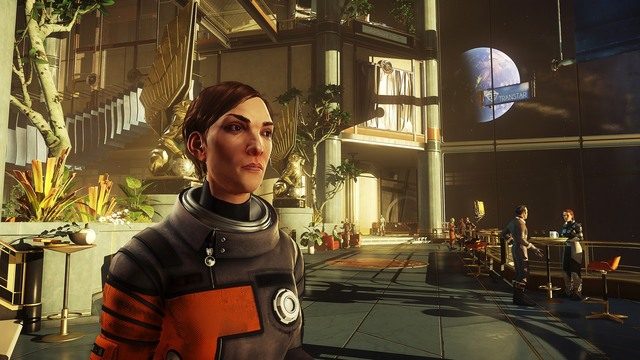
Make sure that you search and inspect each body, downed enemy and cabinet that you come across, because they all offer something helpful. There’s lots of food to find and eat, some booze that will leave you tipsy but less afraid (although Morgan never seemed to get bothered by fear as I played so I don’t get how that works) and tons of junk that can be recycled into parts. Health kits are also really helpful, because enemies are plentiful and this game isn’t easy, even on its normal difficulty. In fact, it’s one of the more challenging titles I’ve played in some time, and requires more thought and slow movement than some may be willing to entertain.
Therein lays one of the main issues with Prey: Its uneven difficulty and occasionally cheap design, the latter of which becomes most problematic during the final third of the game.
After a certain point, things get much crazier on the Talus 1 and its baddies start to become bigger and more plentiful. In fact, as I approached the final objectives, I had a near constant stream of enemies after me, including some corrupted operators (robots that Morgan can use to heal himself, fix his suit’s armor and refill the PSI powers he drains whenever he uses special abilities). They were a pain in the ass to deal with, and I spent many med kits running away from them, as well as some of the other powerful foes I encountered along the way. Sure, I could have immobilized them all (via a GLOO gun that can essentially freeze enemies for a moment or two), then hacked them, but it seemed like they weren’t going to stop coming. Each new room offered more corrupted flying computers boxes, so I ran and hid en route to my objective.
Now, I know that what I wrote above may sound like I’m just whining about the difficulty. Some may also argue I went about that section wrong. Perhaps I did, but Prey‘s combat is sometimes clunky and frustrating, and the onslaught seemed like it wasn’t about to stop. When I got to that point of the game, it felt like a switch had been turned on. One that let the inmates overrun the asylum, so to speak, and unleashed a shitload of enemies in the process. There was little reprieve, there were few places to hide, and dealing with each one would have left me without anything in the way of ammunition and supplies, even though I spent a lot of time recycling junk into shotgun shells, pistol bullets and med kits.
Unfortunately, Prey just isn’t as well designed as it could have been. It starts off as a mind messing survival horror style shooter, which allows you to only hipfire throughout its entirety and stresses taking one’s time to deal with surprisingly powerful enemies that can dole out a lot of damage even early on. Sure, you’ll die a decent amount, but you’ll learn new strategies and get through it. Then, once you get to a certain point, it changes drastically and throws everything but the kitchen sink at you, with expectations that your under-powered avatar will be able to blow everything away like he’s Duke effing Nukem. It’s cheap, and it’s not player friendly.
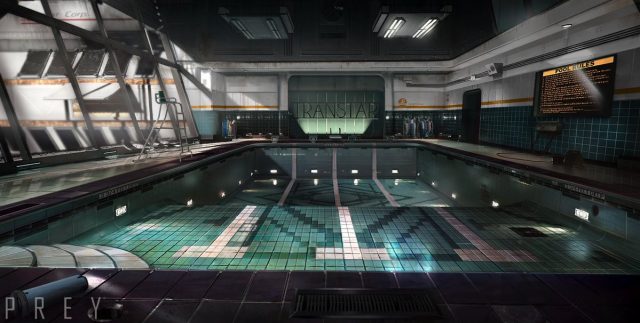
Prey‘s glitches also tend to show more and more as you progress towards Morgan’s final objectives.
At first, the game ran very smoothly on our Xbox One, but once I entered the reactor room (which is where all of those robots started to follow me), the thing became a slideshow. The frame rate was awful at that point, and it wasn’t much better when I went back to the Arboretum to deal with some final tasks. I believe it was because there was too much going on, what with a seemingly never-ending amount of enemies and a yellow mist that had entered the air and thus needed to be rendered as well. This made combat more difficult, before an explosion occurred that made things even worse and would always send the NPC I was speaking to flying, killing him in the process.
I ended up completing the campaign on normal, but there were times where I considered just playing on easy like I’d seen people recommend on forums. My pride got in the way, though, so I kept going, even though I died a lot. I would be lying, however, if I said that I never tried easy, because I did once when I was forced to reload an old save. Why? Well, there was one side quest (of which there are many) that asked me to recover a copy of a composer’s brain, or something to that extent, which was stored on a flash drive in a doctor’s room. I did just that, then noticed that the quest and its objective had gone grey, so I went to the person who gave it to me with no result. It turned out that it had completely glitched, forcing me to reload an old save, redo that quest, then load my original save and continue on my way.
Needless to say, this is a game that needs a patch pretty badly. It’s unfortunate, too, because things ran really well for the majority of the campaign and I was going to positively mention that in my review. It’s not like Prey is the greatest graphical powerhouse out there, either. Sure, it looks decent and has a good amount of detail, but it’s not going to win any awards for its somewhat dated visuals.
Now, on the other hand, I’m happy to report that Prey has some impressive music and sound effect design that combines to create a fittingly chilling atmosphere. Its these audible features that really make the Talus 1 (and the things that inhabit it) feel alive, with the same being true of the small area of space that you get to rocket through from time to time. Unfortunately, however, things are not all peaches and cream when it comes to this game’s audio, as its sound mixing can lead to annoyance. Simply put, certain things are louder than others, which makes it difficult to find a good volume that will allow you to hear every audio log, listen to every audible cue and also hear every explosion without suffering hearing damage or waking any housemates up. I started playing on one volume, then dropped it substantially once loud booms because regular, because they were just so loud in comparison to what I was used to. The downside to that was that it made certain audio logs tough to hear, so I was constantly adjusting then readjusting the volume level as I went along.
With all that having been said, I must admit that Prey turned out to be more methodical than I was expecting. This would normally be a perfectly fine thing if it weren’t for the fact that the game suffers an identity crisis part-way through and then becomes less player friendly as a result. Unfortunately, it starts off better than it ends, and though it has some great moments and some excellent building blocks, it never quite gels as well as it could have.
Simply put, it’s pretty good, but it’s not great.
**This review is based on the Xbox One version of the game, which we were provided with.**

